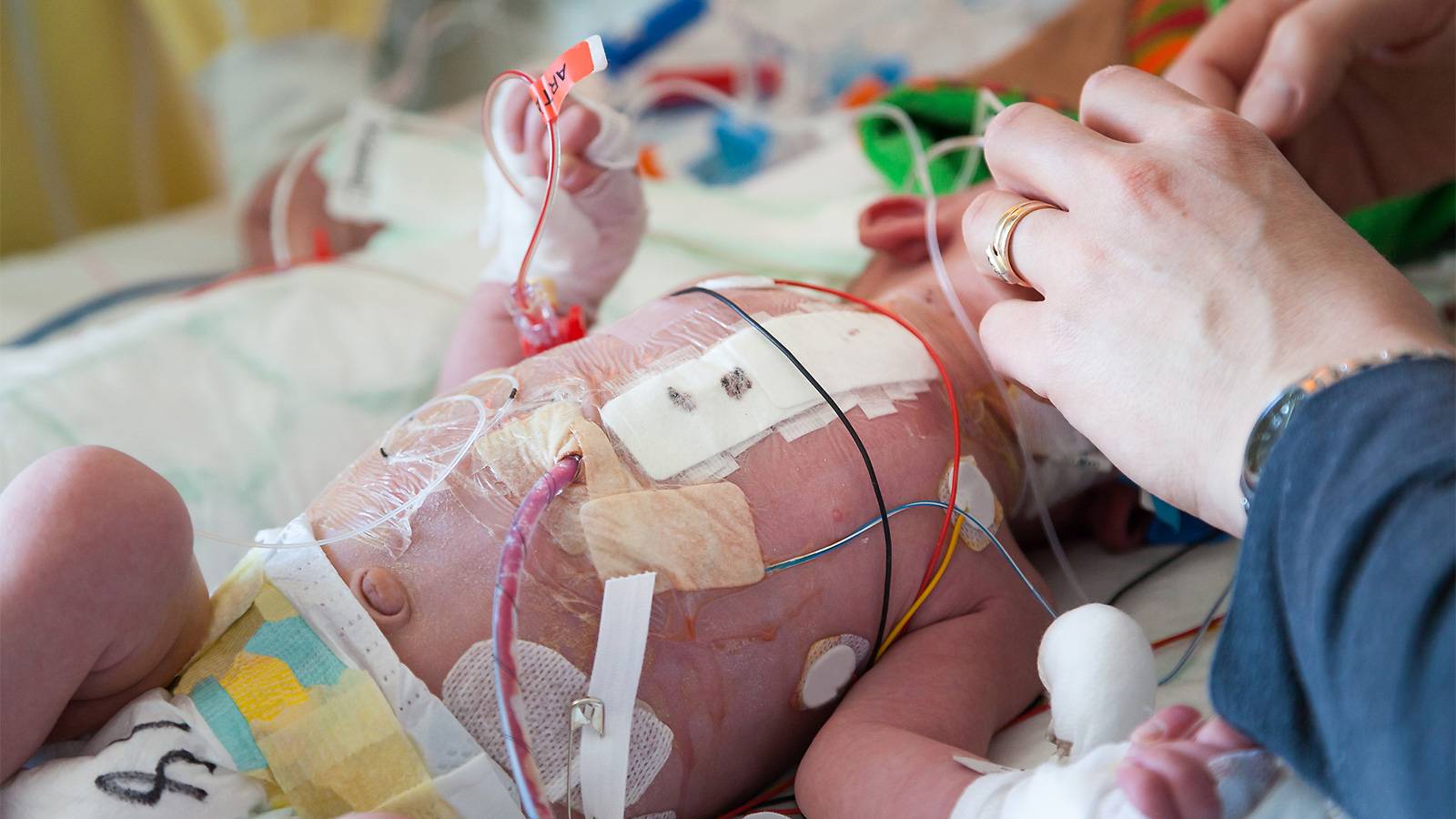Pearlyn Tham was hoping the hole in her newborn’s heart would close by itself, but it ended up needing surgery…

“On the 9th of September 2014, our trio grew to become a family of four with the arrival of our second daughter, Edele. I had a routine C-section and everything went smoothly. Our daughter Edlyn, who was then 2, was excited to become an older sister.
While getting her newborn tests done, our paediatrician heard a murmur in Edele’s heart. A murmur usually shows up as an extra or unusual sound in addition to a normal heartbeat. However, he assured us that the noise will be gone in a few days as the valve in the heart should close by itself in a week.
Happy to hear that all was well, we got discharged after four days and took Edele home. We initially noticed that our baby was sleeping a lot. She would even sleep through her feedings, which was supposed to happen every two to three hours. When she did feed, each session would take longer than 30 minutes.
I was worried if Edele was getting enough milk since she didn’t feed regularly and took such a long time to complete a feeding. To make sure she had sufficient nutrition, I decided to pump my breastmilk and feed it to her using a bottle, so that I could monitor her intake.
We kept hoping the issue would resolve by itself, but when we went back a week later, the murmur was still there.
During the routine check-up with our paediatrician on the second week, he noticed that the murmur was still there. Our doctor didn’t seem too concerned and he told us it still wasn’t time to worry yet. We kept hoping the issue would resolve by itself, but when we went back a week later, the murmur was still there.
We were then referred to a cardiologist at Mount Elizabeth hospital. Tests and scans were done on our little girl which showed that the valve, which was supposed to have closed by now, was still open and there was a small hole there.
For the next four weeks scans were done on a weekly basis to monitor the heart and estimate the size of the hole.
Things didn’t seem to be getting better, so we were given two choices. The first was to put Edele on medication, which may or may not work. There was also a chance that the side effects from the meds might affect the organs. Alternatively, there was surgery. It sounded scary to put a tiny baby through that, but the doctors assured us that it was very basic.
Trying to figure out the best medical route for our newborn baby was quite a stressful time to say the least.
What did Pearlyn and her family end up choosing? Read on to find out…

After a few consultations with a heart surgeon, we decided to go ahead with the surgery. Another reason that pushed us in that direction was the fact that Edele was not thriving as much as she was supposed to be.
She was 2.6kg at birth, but after two months she hadn’t even reached 3kg yet. Her growth was stunted and the doctors attributed that to her heart condition.
So our infant was scheduled for surgery. Thankfully she didn’t have to abstain from food prior to the surgery. She was admitted into the hospital the morning of the procedure and prepped then.
My husband and I were so nervous and worried for our child, but the doctors kept assuring us that it was a routine one to two hour procedure. They told us to go for breakfast to help us keep our mind off what was going on in the operating theatre.
The next time we saw our little girl, she was in the neonatal intensive care unit (NICU). She looked very drowsy and was hooked up to so many machines. It was heartbreaking to see my teeny tiny baby in a big hospital bed.
Edele was in the NICU for a day, but her recovery was far from over. Her skin had a yellowish-green tinge and she also looked very pale. She was in so much pain, she couldn’t move. As parents, we couldn’t help but worry for our child.
She looked very drowsy and was hooked up to so many machines. It was heartbreaking to see my teeny tiny baby in a big hospital bed.
The incision was made under her armpit and it was about 5cm long. It doesn’t sound like much, but on a small baby it looked huge. The nurses helped us take care of the wound while we were in the hospital, but we had to eventually learn how to clean it ourselves using a special solution.
To our joy, Edele started looking more like herself a week later. She was also more active. She had to stay in the normal ward for another four days. I was by her side the entire time.
I thought it would have been harder since I had to be there for Edlyn as well, but our older daughter surprised us all with her level of understanding and compassion. She didn’t mind that mummy had to be with her little sister. In fact, she found the entire stay at the hospital fun because it was different from her normal daily routine!
A week after the surgery, we consulted with the surgeon and cardiologist who conducted Edele’s surgery. Everything was looking good. We were told to come back monthly for the next three months to monitor her progress. After that the checkups will be on a yearly basis.
A college of mine has a daughter who had the same surgery as Edele, but ended up with post-op complications. So I kept my eye peeled for any signs of complications. Lucky for us our little girl started putting on weight quickly after the surgery and her feeding also improved. Today Edele is a happy and healthy toddler and we couldn’t be happier for her.
Pearlyn Tham 37 is mum to Edele Pee, 2 and Edlyn Pee, 4.
Read on to learn more about why holes are formed in your heart.
Hole in the heart – the facts
Professor Quek Swee Chye of the National University Hospital’s paediatric cardiology division sheds more light on this condition.
- The human heart is divided into the right and left side. Each side has an upper and lower chamber. Blood shunts from the left to the right chamber. A hole between both sides of the heart constitutes a “hole-in-the-heart”.
- The hole can be an isolated defect, or part of several heart defects, also known as complex congenital heart disease.
- The incidence of congenital heart defect is about 8 per 1000 live births. Holes in the heart contribute to more than 50 per cent of these cases.
- Often, the causes are unknown. Of the known causes, antenatal infections, such as rubella can cause heart defects, as can certain medications. Chromosomal aberrations, such as Down’s syndrome are also known causes.
- A hole in the heart can be picked up in infancy or detected later in childhood. It’s usually picked up as a heart murmur. Larger holes in the heart that can cause congestive heart failure in babies and will present early with symptoms. Antenatal scans during pregnancy can also now detect large holes in fetuses even before birth. Small defects may be missed, but are then relatively minor.
- Heart murmurs are the most common symptoms. For babies with large defects, symptoms include difficulty or prolonged feeding, sweatiness, failure to gain weight, breathing difficulties and a rapid heart rate.
- Small defects can be managed expectantly, as some may close or reduce in size over time. Large defects can be closed by surgery through a minimally invasive procedure called cardiac catheterisation.
- Those whose defects are small and haemodynamically insignificant can lead a normal life. For those whose defects are large, interventional and surgical closure has led to good outcomes.
- If left untreated, congestive heart failure can result in failure to thrive and frequent chest infections.
Photos: iStock
Also check out other dramatic true stories here.
Check these out too…
12 burning questions all new parents ask

